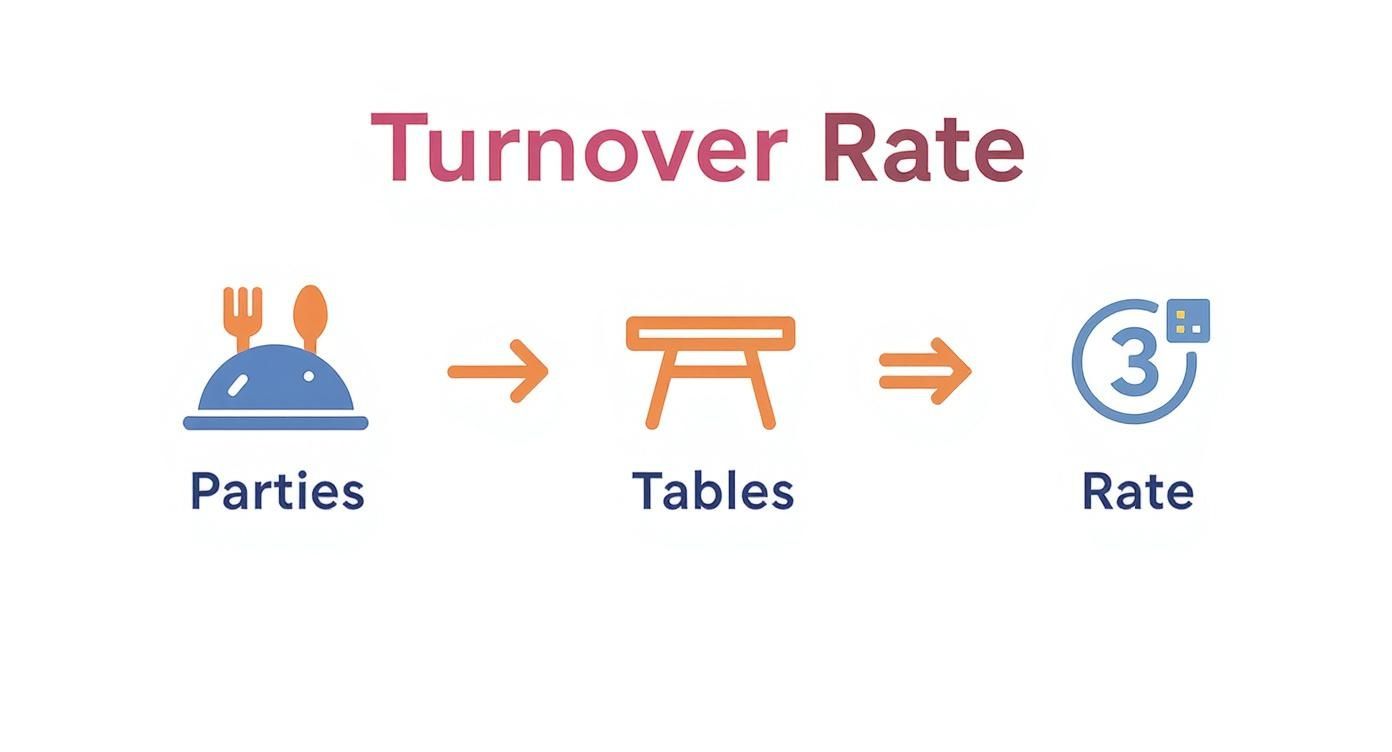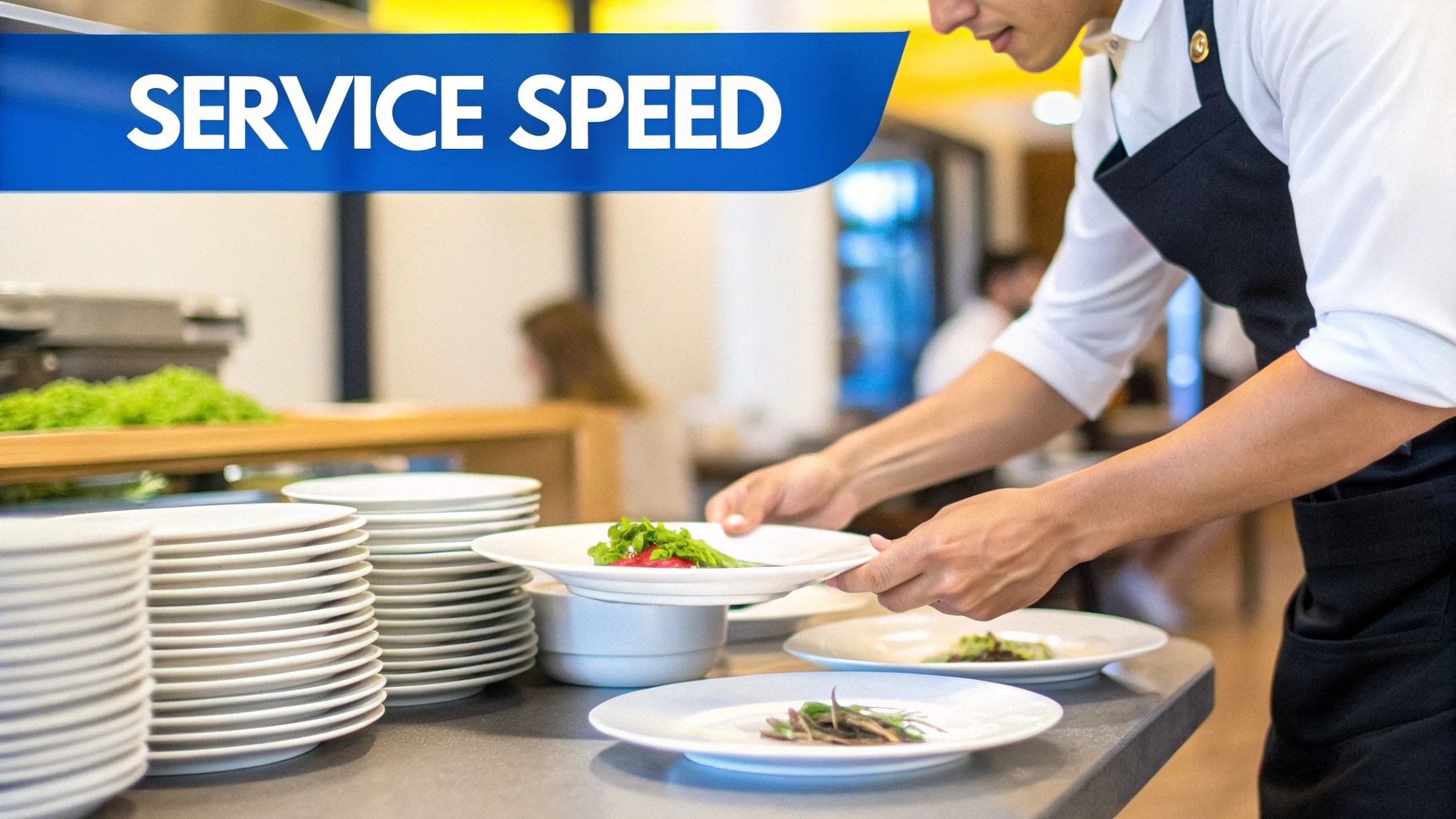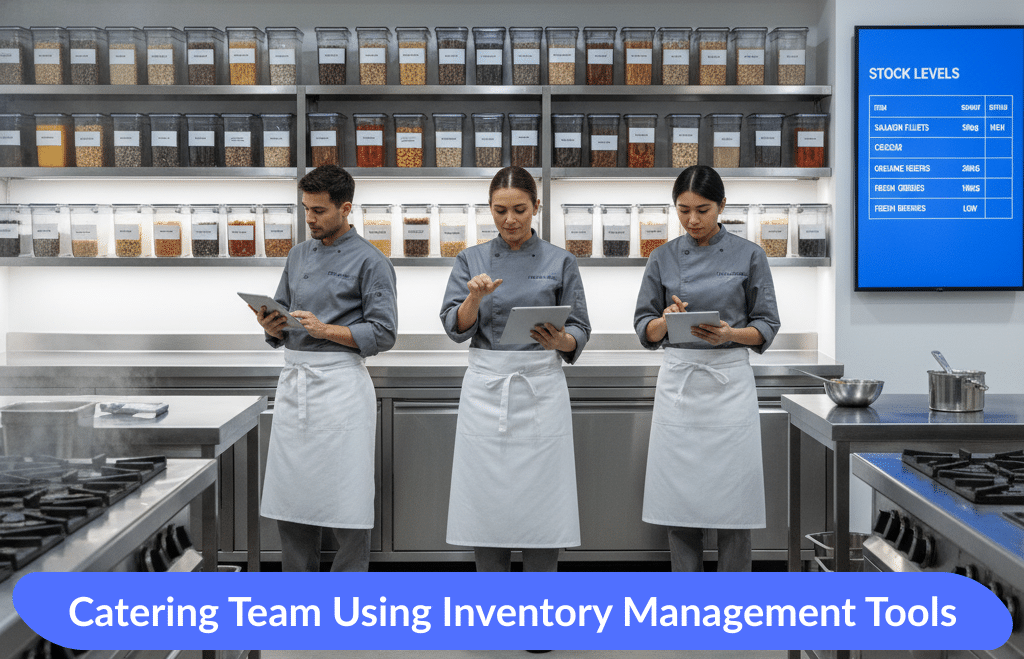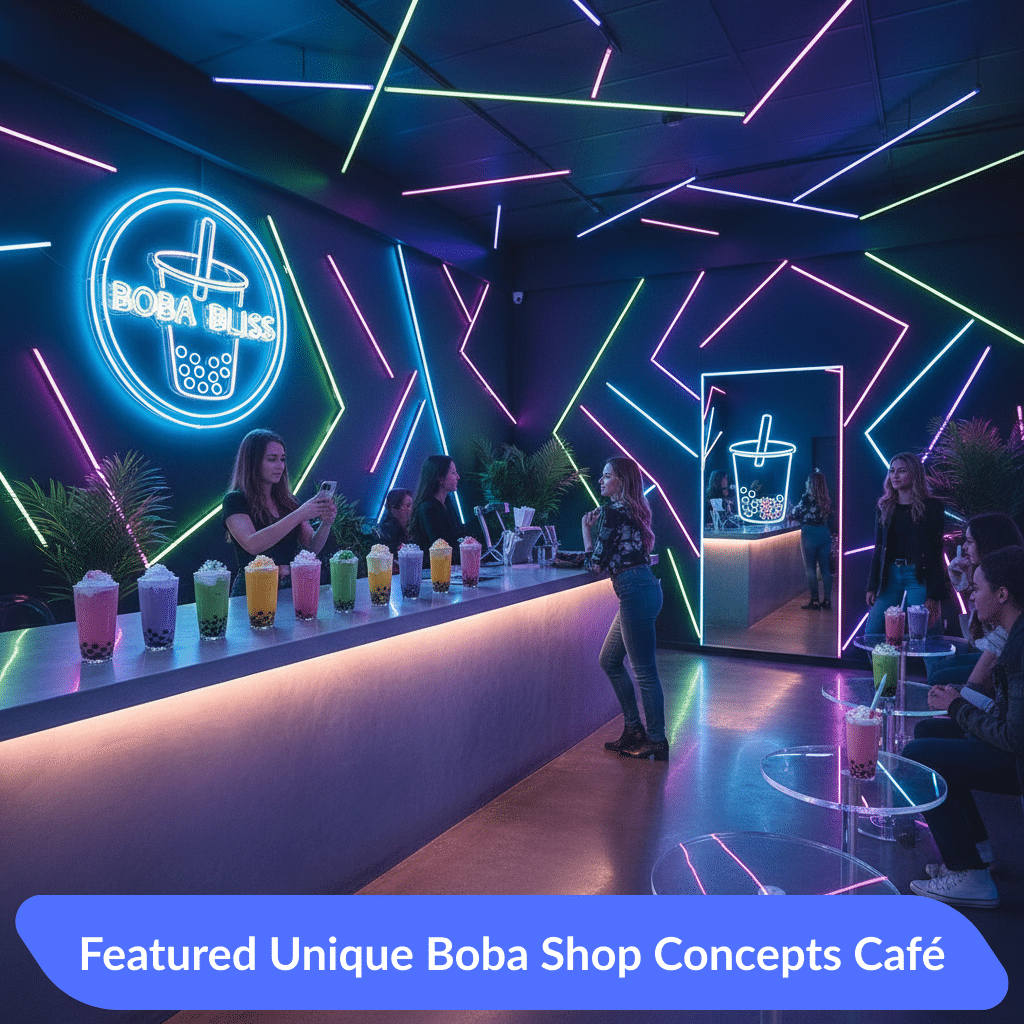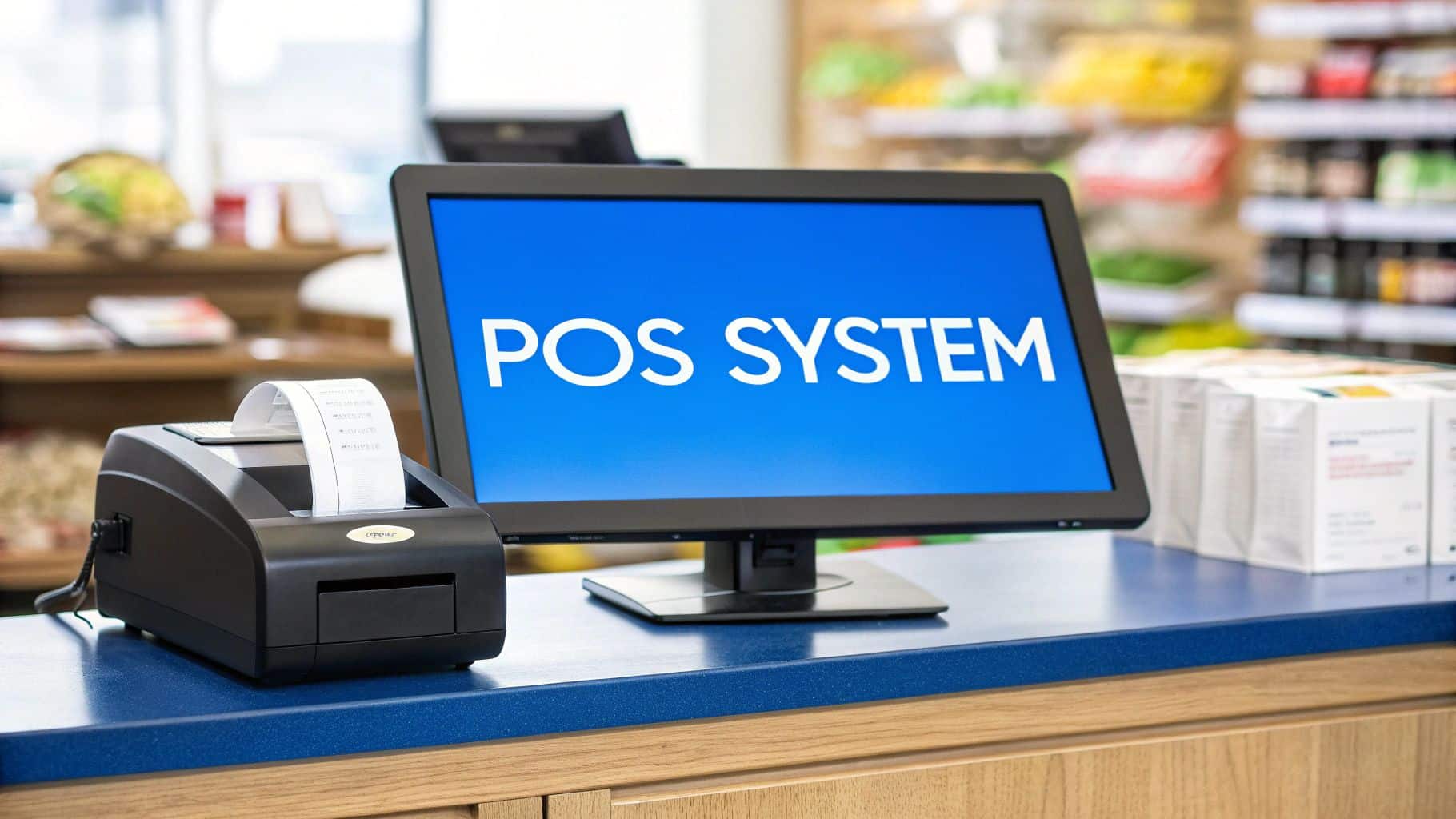Ever thought of your restaurant's dining room as an airport runway? Each table is a gate. Your mission is to land the planes (your diners), service them with a fantastic meal, and get them back in the air so the next flight can come in.
That whole process, from seating to paying the check, is the heart of your restaurant table turnover rate. It’s one of the most direct measures of your restaurant's efficiency and, ultimately, its financial pulse.
Understanding Restaurant Table turnover
At its most basic, table turnover tells you how many different parties use a single table during a set period—say, your Friday night dinner rush. A high turnover rate means you're serving more people and making more money from the exact same square footage. This isn't just some abstract business metric; it’s a vital sign for your restaurant.
Let's say you run a cozy bistro with 15 tables. During a busy three-hour dinner service, you seat 45 different parties. Your table turnover rate is 3. That means, on average, each one of your tables welcomed three different groups of guests. Getting a handle on this number is the first step to unlocking your restaurant's true earning power without needing to knock down a single wall.
Why This Metric Is Crucial
Keeping a close eye on your table turnover rate pays off in some very real ways, all of which hit your bottom line. It's about building a smarter, more profitable operation from the inside out.
- Increased Revenue: It’s simple math. More customers served in the same time frame equals higher sales.
- Improved Efficiency: A healthy turnover rate is a sure sign that your kitchen and your front-of-house staff are perfectly in sync.
- Enhanced Guest Experience: When you get this right, turnover feels smooth, not rushed. Shorter wait times make for happier guests who can't wait to come back.
At its core, improving table turnover is about finding the perfect balance between speed and hospitality. The goal is to streamline service so effectively that guests feel exceptionally cared for, not rushed out the door.
This single metric is a powerful tool for growth. Once you understand it, you can make better decisions on everything from staffing levels and menu engineering to your floor plan. It’s a foundational piece of the puzzle for maximizing your restaurant profit margin and building a business that lasts. Next, we’ll get into the nitty-gritty of how to calculate, benchmark, and boost this critical number.
How to Calculate Your Table Turnover Rate
Before you can fine-tune your restaurant's flow, you need to know your starting line. Figuring out your table turnover rate isn't some high-level math problem; it's simple arithmetic that gives you a crystal-clear look into your daily performance. Think of it as your baseline for making smarter, more informed decisions.
The formula itself is refreshingly simple. You just need two numbers from any given service period, whether it's your Saturday night dinner rush or a quiet Tuesday lunch.
Table Turnover Rate = Parties Served ÷ Number of Tables
This little equation tells you exactly how many times, on average, each table "turned" with a new party during that window. It’s a direct snapshot of your dining room's efficiency.
Putting the Formula into Practice
Let's walk through a real-world scenario. Say you own a lively bistro with 20 tables. During a packed three-hour dinner service, your host seats a total of 60 different parties.
Plugging those numbers into the formula, you get:
60 (Parties Served) ÷ 20 (Number of Tables) = 3
Your table turnover rate for that service was 3. In plain English, that means each of your tables brought in revenue from three different groups of guests during that peak time. This number is your starting point—a crucial first step in using restaurant data analytics tools to maximize efficiency.
Knowing your turnover rate is like having a speedometer for your restaurant. It tells you how fast you're moving, helping you decide whether to maintain your pace, ease off the gas, or find ways to safely speed up without compromising the journey for your passengers—your guests.
Understanding the Average Occupancy Time
Once you have your turnover rate, you can dig a little deeper to find out how long each party typically stays. This adds another valuable layer to your analysis. To calculate the average time a table is occupied, just divide the length of the service period by your turnover rate.
Let's go back to our bistro example. The dinner service was three hours, which is 180 minutes.
180 (Minutes in Service) ÷ 3 (Turnover Rate) = 60 Minutes
This tells us that the average party dined for about an hour. With this info, you can start to see if tables are sitting empty for too long, if guests are lingering, or if your service is hitting that sweet spot. Most casual dining restaurants aim for around three turns per meal service, so a rate of 3 is a pretty solid benchmark to hit.
Benchmarking Your Performance Against Industry Standards
So, you’ve calculated your table turnover rate. Great. But what does that number actually mean? A raw number without context is just data, not insight.
A turnover rate that signals a wildly successful night at a fine-dining restaurant could be a five-alarm fire for a quick-service cafe. To make your number meaningful, you have to compare it against industry benchmarks. This is how you set realistic goals that actually move the needle for your business.
Think about it: a bustling downtown pizzeria is built for speed and volume. A quiet, upscale bistro, on the other hand, sells a luxurious, multi-hour experience. These are fundamentally different business models, which naturally leads to a huge spectrum of what a "good" turnover rate looks like.
Understanding Different Turnover Benchmarks
The kind of experience you're selling is the single biggest factor in how long guests stay, and therefore, how often your tables flip. Trying to hit fast-casual speed in a fine-dining room would completely torpedo the guest experience. Likewise, a slow, leisurely pace at a busy lunch spot means leaving money on the table.
Here's a quick breakdown of what to expect:
- Fine Dining: Here, it’s all about the unhurried, multi-course journey. A low turnover rate of 1.5 to 2 turns per service isn't just normal—it's part of the appeal.
- Casual Dining: This is your sweet spot for family restaurants and sit-down bistros. The aim is a comfortable but efficient meal, usually targeting around 3 turns during a dinner rush.
- Fast-Casual & QSR: Speed is everything. These operations are designed to get people in and out, and they often push for 5 or more turns during a peak meal service.
Trying to compare your restaurant to a generic industry average is like comparing a sprinter to a marathon runner. They're both athletes, but their goals and how they measure success couldn't be more different. You have to know which race you're running.
The simple infographic below breaks down the basic formula, showing how the number of parties you serve over a period is divided by your number of tables.
This is your starting point. Once you have your number, you can see how you stack up against the right benchmark for your specific concept.
A Clear Comparison of Turnover Goals
Seeing the numbers side-by-side can help you pinpoint exactly where your restaurant fits in. The table below breaks down the typical targets for different restaurant types, clearly linking the turnover rate to the average time a guest spends seated.
Typical Table Turnover Rates by Restaurant Type
| Restaurant Type | Target Turnover Rate (per meal service) | Average Seating Time |
|---|---|---|
| Fine Dining | 1.5 – 2 | 90 – 120+ Minutes |
| Casual Dining | 3 | 60 – 75 Minutes |
| Fast-Casual | 5+ | 30 – 45 Minutes |
| Cafe / Coffee Shop | 6+ | 20 – 30 Minutes |
Notice the clear inverse relationship: when the average seating time goes down, the turnover rate goes up.
Don't treat these benchmarks as rigid rules. Instead, use them as guideposts to evaluate your operational flow and set a meaningful target for improving your restaurant table turnover rate.
What Really Drives Your Table Turnover?
Knowing your table turnover rate is the first step. The real trick is understanding what's actually moving that number up or down. Think of your restaurant's operations as a complex machine with dozens of interlocking gears. When every gear turns in sync, service is smooth and efficient. But if just one gets stuck, the whole system grinds to a halt.
It all starts the moment a guest looks at your menu. A huge, complicated menu can cause "decision paralysis," adding minutes of dead time before your kitchen even gets the order. A smarter, more focused menu, however, does the opposite. It subtly guides customers to popular, profitable dishes your kitchen can execute quickly, setting a brisk pace from the get-go.
That pace has to carry straight from the menu to the kitchen line. If your back-of-house is a maze of confusion or the prep stations aren't set up for speed, even the simplest ticket will get bogged down.
The Friction Points Slowing You Down
Beyond the menu and kitchen, a few other critical spots can either speed up your service or slam the brakes on it. Each one is a potential bottleneck, and if you ignore them, they'll directly hurt how many covers you can do in a night.
-
Dining Room Layout: A clumsy floor plan creates actual traffic jams. When servers can't move easily between tables and bussers have to weave through a maze, every single task takes longer. Delivering food, clearing plates, resetting tables—it all slows to a crawl.
-
Paying the Bill: This is often the biggest time-waster. The whole dance of flagging down the server, waiting for the check, handing over a card, and waiting for them to run it and come back can easily tack on an extra 10-15 minutes of dead time.
-
Teamwork (or Lack Thereof): A poorly trained or disjointed team is a recipe for inefficiency. When your host, servers, and bussers aren't communicating, you get a domino effect of delays—like empty tables sitting dirty while waiting guests get frustrated.
The Hidden Drag of High Staff Turnover
Maybe the biggest influence of all is the experience and stability of your team. A seasoned crew moves with instinct. They anticipate what a guest needs before they ask and handle their duties without a single wasted motion. High employee turnover, on the other hand, means you're constantly starting from square one, which slows down the entire service.
Operational excellence isn’t about rushing people out the door. It’s about eliminating every single point of friction and wasted time so the experience feels smooth and attentive, not hurried.
Restaurants that nail this—with smart menus and well-trained teams—can hit that sweet spot of three turns per service. But those battling constant staff churn often struggle to keep up. It's no wonder, when industry reports show the average employee turnover rate can be a staggering 79.6%. That means almost four out of five new hires are gone within a year. You can find more insights about restaurant staff retention on Metrobi.
By finding and fixing these root causes, you can stop reacting to slow service and start actively managing your table turnover for a healthier bottom line.
Actionable Strategies to Improve Your Turnover Rate
Turning numbers and insights into real-world results is where the magic happens. Improving your table turnover isn’t about rushing guests out the door. It’s about making your service so incredibly smooth that efficiency becomes a natural, invisible part of the experience.
Think of the entire dining process as a chain. A single slow link—whether it's a clunky floor plan or a sluggish payment process—can throw off the entire evening. By fine-tuning each step, you build a stronger, more profitable operation without ever sacrificing the heart of hospitality.
Optimize Your Dining Room and Menu
Long before the first guest arrives, you have the power to set your team up for a successful shift. Your restaurant's layout and your menu are two of the most potent—and often overlooked—tools for controlling the pace and flow of service.
Take a hard look at your floor plan. Imagine you're a server weaving through tables on a slammed Saturday night. Are the pathways clear? Or are there bottlenecks that create traffic jams between the kitchen and the dining room? A poor layout adds precious seconds to every single trip, which quickly adds up to minutes over the course of a meal. Sometimes, just repositioning a few tables can make a world of difference.
Next, give your menu a critical once-over. A massive, unfocused menu can cause "decision paralysis," where guests spend way too much time just trying to figure out what to order.
A well-curated menu doesn't just simplify choices for your guests; it guides them. By highlighting popular, high-margin dishes that your kitchen can execute perfectly and quickly, you shave minutes off ordering time and help your kitchen find its rhythm.
This focused approach helps diners decide faster and lets your back-of-house team pump out dishes with speed and consistency.
Empower Your Team with Training and Technology
Your staff are the conductors of the dining experience, and their efficiency is everything. Great training goes beyond just memorizing daily specials; it’s about mastering the art of proactive service that keeps the meal flowing naturally.
Train your servers to read the table. They should be able to anticipate a guest's needs, like offering a drink refill just before a glass goes empty or having the check ready as soon as they sense the conversation is winding down. It’s not about rushing—it’s about being perfectly in sync. For more ideas on this, check out our guide on how to handle managing customer flow in walk-in restaurants.
That said, one of the biggest logjams almost always happens at the very end: paying the bill. The old-school routine of flagging down the server, waiting for them to bring the check, and then waiting again for them to run the card can easily add 10-15 minutes of dead time.
This is where modern POS technology really shines. Giving your team tools for tableside ordering and payment is a total game-changer for your turnover rate.
- Tableside Ordering: When servers use a handheld system like Biyo POS, they can punch in an order and fire it directly to the kitchen right from the table. This cuts out the time spent walking to a terminal and drastically reduces errors.
- Instant Payments: When guests are ready to go, the server can process their payment right there. This one change single-handedly eliminates the most common time-waster in the entire service cycle.
At the end of the day, a faster turnover rate is a key part of boosting your restaurant's profit margin. By combining a smarter layout, a focused menu, a well-trained staff, and the right tech, you can serve more happy customers and build a much healthier bottom line.
Common Questions About Table Turnover
Even after you've got the basics down, you'll probably still have a few questions when you start trying to improve your restaurant's table turnover rate. Let's tackle some of the most common ones that pop up.
Can a High Turnover Rate Hurt the Customer Experience?
It absolutely can. If you're so focused on a high restaurant table turnover rate that customers feel like they're being shoved out the door, you're going to have a problem. Rushing guests is a sure-fire way to get negative online reviews and make sure they never come back.
The real goal isn't to be fast; it's to be efficient without anyone noticing. Think of it as invisible efficiency. You want the entire dining process to feel smooth and attentive, not like a race against the clock. This all comes down to training your staff to be on the ball—clearing plates when a course is done or offering the check at just the right moment—without making anyone feel like their time is up.
The sweet spot is when efficiency feels like excellent service. When a meal flows perfectly from seating to payment without awkward delays, guests don't feel rushed; they feel exceptionally well-cared for.
What Is the Most Effective Technology for Improving Turnover?
Without a doubt, a modern Point of Sale (POS) system with handheld devices for tableside ordering and payment is the single biggest upgrade you can make. This one piece of tech tackles several bottlenecks in the service flow at once, saving precious minutes with every single table.
Here’s a quick look at how it helps:
- Instant Order Transmission: When a server takes an order at the table, it goes straight to the kitchen. This cuts out the time spent walking back and forth and pretty much eliminates ordering mistakes.
- At-the-Table Payments: Forget the old, slow dance of dropping off the check, waiting for a credit card, running to the terminal, and coming back. Taking payment right at the table can easily shave 5-10 minutes off the end of every meal.
How Often Should I Calculate My Table Turnover Rate?
You should make this a regular part of your management routine. Looking at your numbers on a weekly basis is a great starting point to see the bigger picture and figure out if the changes you're making are actually working.
But the real magic happens when you dig a little deeper. Start comparing different days—your slow Tuesday versus your slammed Saturday—and different meal times, like lunch versus dinner. This detailed view shows you exactly when and where you need to make adjustments, whether it's staffing levels or operational tweaks. A good POS system can even run these reports for you automatically, so staying on top of it is a breeze.
Ready to see what a more efficient dining room can do for your bottom line? Find out how Biyo POS gives you the tools to increase your table turnover rate, from tableside ordering to instant payments. Explore Biyo POS today and see the difference for yourself.

